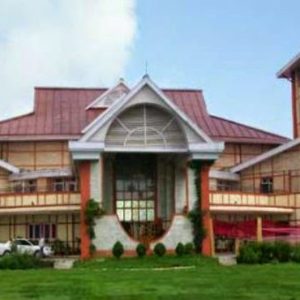Char Dham, also known as Char DhamYatra, is one of the most prominent and significant pilgrimage route in the Indian Himalayas. This consists of four abodes: Yamunotri, Kedarnath, Gangotri, and Badrinath. These temples are situated within the Garwhal region of Uttarakhand state in North India. Millions of believers revere all these religious places in their yearning to get rid of their sins to have the salvation and blessings of the Lord.
Each site has its own distinct attribute. Kedarnath is devoted to the Lord Shiva and Badrinath to Lord Vishnu while Yamunotris is dedicated to Goddess Ganga and Gangotri is for the Yamuna river. While these sites are what we know of it now, the origins of Char Dham is quite mysterious. Char Dham was an original name for India’s most well-known pilgrimage course consisting of four important temples as well— Puri, Rameshawaram, Dwarka, and Badrinath. The temples had been organized together by the eight-century reformer and philosopher Shankaracharya (AdiSankara) as the classic tour to the four points of the subcontinent.
Historically, Badrinath located 500 km from New delhi— most important of the four sites— became the vital element or keystone site of a Himalayan pilgrimage circuit labeled as the Chota (Little) Char Dham. With Chota Char Dham, they do not have a single factional connection because the three major sectarian movements all have representation, with the Vaisnava site Badrinath joined by one Saiva site (Kedarnath) and two Devi sites (Yamunotri and Gangotri).
Char Dham has a major significance and though it is not a mandatory, it is fundamental that every Hindu should do Char Dham at least once in their life. And with groundwork developments, the importance of the Char Dham as a destination and religious activity has notably increased. It has also been made easier. Previously, it can be explored in one stretch in 10-11 days. But nowadays, you visit Char Dham in as short as 2 days by getting helicopter services. Presently, the Char Dham sees more than 250,000 visitors from different parts of India. Even foreigners want to do the pilgrimage to see the heavenly natural beauty and Himalayas as well as learn more about India’s culture. The two-month period before the monsoon has the most numbers of pilgrims. When the rains come, usually in late July, travel becomes treacherous as huge road buildings have destabilized the rocks and destructive landslides and road accidents usually happen every year. Mortality rates for a season even exceed 200. However, pilgrims continue to visit the Char Dham during monsoon periods. Even during the hostile winter months in October and November, pilgrims and visitors still abound with a stunning vividness from the mountain scenery that circles the sites after the rains have moistened the dust of the plains below.
The Char Dham pilgrimage can often be entered from the temple town of Haridwar. But you can also leave from Haridwar’s sister city, Rishikesh or from Dehra Duhn, the capital of Uttaranchal. No matter where you are embarking, the Char Dham pilgrimage is often a memorable one and the route is full of great adventures.


